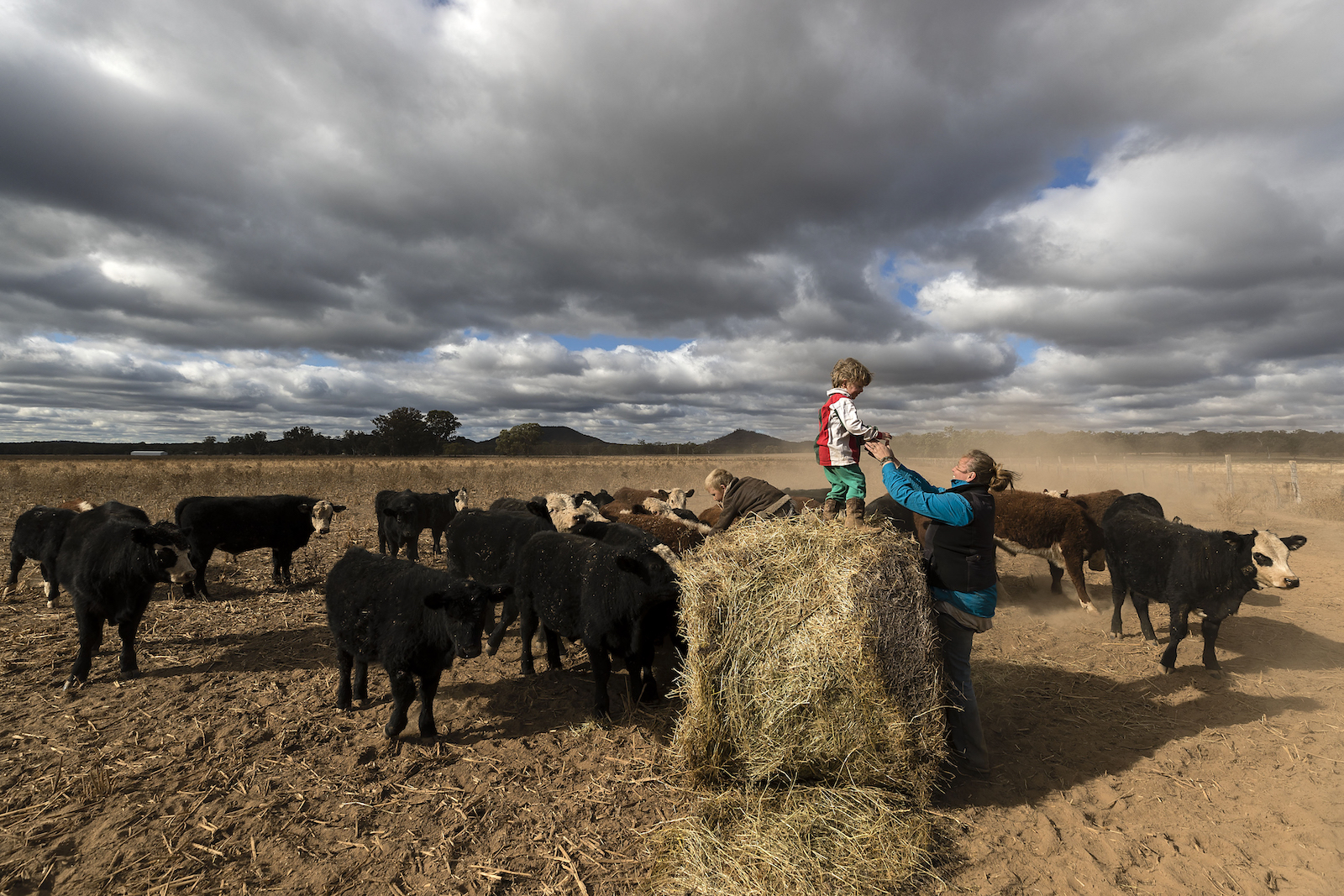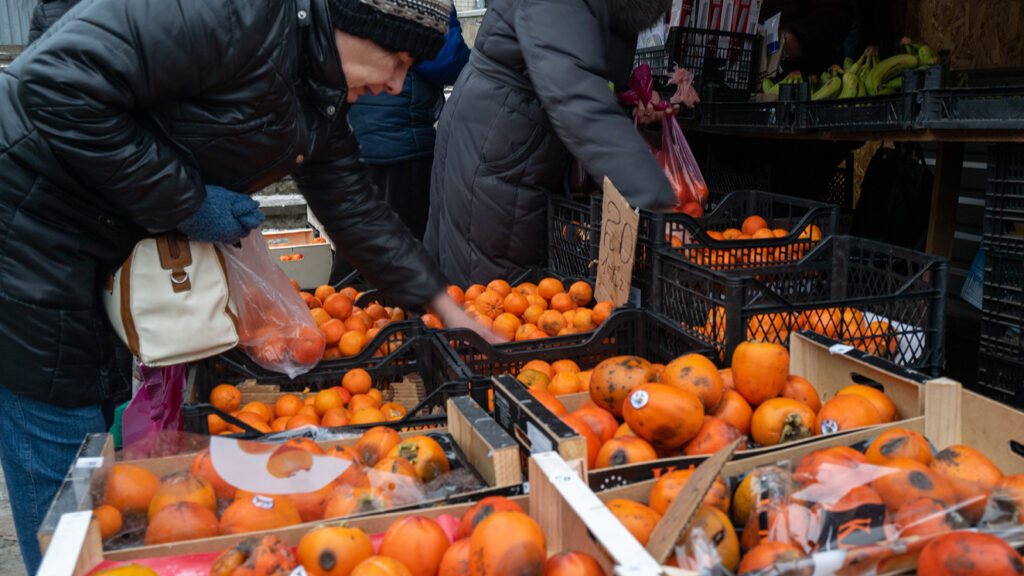ASEAN Banks Key to Regional Food and Water Security

In the Central Western region of New South Wales, Australia, farmers continue to battle a crippling drought that many locals are calling the worst since 1902. Climate change is expected to threaten both food and water security in the region.
Photo: Brook Mitchell/Getty Images
Climate risk is not just about large-scale visible impacts, such as cities being decimated by extreme weather events in the Philippines—or facing inundation risk in Thailand—it also includes the insidious threat to our food and water security and, therefore, Southeast Asia’s socioeconomic stability. The creation of sustainable and resilient economies is essential to mitigating these risks, and banks are one of the most powerful levers to do this.
Food and Water Security at Risk
Climate change is already impacting food and water security. Not far from Southeast Asia, we have just witnessed the worst drought in a generation in Australia that has devastated huge swathes of grazing and crop land, leaving farmers struggling to feed their livestock and support their own families. Is this a glimpse into the future for ASEAN? Climate change is causing longer and more intense droughts as well as changes in temperature and soil quality, which further decimate crop yields. As sea levels rise, saltwater intrusion threatens coastal sources of groundwater, while land available for agriculture shrinks. These are the myriad of ways in which climate change is expected to threaten food and water security in Southeast Asia.
The Use of Land for Food
On the other hand, the way we use land for food production is a key cause of climate change. We are witnessing increased unsustainable land clearing for the purpose of producing food, with the agriculture sector using 34 percent of the planet’s land and agriculture, forestry and land use (AFOLU) accounting for up to 24 percent of all greenhouse gas emissions. Yet, resilient food systems depend on healthy forests and other ecosystems, which play a critical role in mitigating climate change and regulating water flow. In this way, we are threatening the very food production systems on which we depend, aggravating poverty, causing economic losses and creating geopolitical instability. The way in which we use land for food—where we recognize the intrinsic environmental value of land—the new black gold—must be part of the global climate solution.
How Can Banks Support Sustainable Land Use?
ASEAN banks are key to addressing regional climate risk and hold huge potential in financing sustainable food, energy and infrastructure systems in the region. As key financiers of the region’s smallholders, small- to mid-caps and private companies in the food supply chain that are beyond the radar screen of institutional investors, they can tie the access to and cost of capital to sustainability criteria, in addition to other credit considerations, to incentivize sustainable business practices. In doing so, they create more resilience to climate risk in their loan portfolios, while ensuring that the businesses that they finance, especially those in high-impact sectors such as food, are part of the solution. For example, Bunge, an agribusiness company, has partnered with Santander Bank in Brazil to provide longer-term loans to soy farmers willing to commit to a no-deforestation approach.
Investors with ASEAN banks in their portfolios can support these recommendations through voting and engagement.
Despite this, a recent report* by WWF and the National University of Singapore assessing 34 ASEAN banks found that the region’s biggest banks are not fully capitalizing on that potential. They are aware of the impact that their businesses have on the environment and society, but their policies on managing environmental, social and governance (ESG) issues are mostly not disclosed. For example, only five banks recognized deforestation risk despite Southeast Asia being home to two key deforestation fronts in Greater Mekong and Borneo. Similarly, 30 banks did not disclose whether senior management has oversight of climate risks and opportunities, a key recommendation of the Task Force on Climate-related Financial Disclosures, which is increasingly backed by global investors and has specific recommendations, both for banks as well as for food and beverage companies. These findings suggest a significant untapped opportunity for banks to use their influence to move clients to proactively manage ESG impacts and risks, thereby managing the climate risks that may be accumulating in their loan portfolios.
More Green, Less Brown
One of the ways in which ASEAN banks can help future-proof ASEAN’s food security and their own portfolios is by shifting financial flows away from unsustainable practices via the use of ESG policies and green financial products. And it is encouraging to see that progress has been made in this year’s assessment compared to last year, particularly by Singaporean, as well as a few Malaysian and Thai banks.
However, although 22 banks disclosed sustainable banking products, only two of these banks have products that tie the cost of capital to performance against sustainability criteria. While these two sustainability-linked loans are to companies in food supply chains, demonstrating the ability to capture opportunities related to a sustainable food system, much more remains to be done. In particular, these loans need to become a material part of these companies’ balance sheets, not just short-term working-capital facilities, and we need to see a more widespread uptake of such products. Furthermore, ESG products can only successfully contribute to the Paris Agreement and SDGs if loan portfolios as a whole are being realigned to a resource-efficient and low-carbon world. This will require more ambitious targets at the portfolio level.
Sustainable Land Use Is Critical to the Global Climate Solution
Food and water security are existential issues impacting all of us. Banks must take urgent steps to address key risks within the activities that they finance, such as climate, deforestation and water risk, and allocate capital to transform the region’s food systems. Investors with ASEAN banks in their portfolios can also play a key role in supporting these recommendations and asserting their influence as shareholders through voting and engagement. Together with science-based NGOs, the finance sector can transform the way in which we use land to meet society’s needs so that it becomes part of the global climate solution. This is critical for ASEAN to have a resilient and sustainable future and for banks to manage climate risk in their portfolios.
*The WWF Sustainable Banking in ASEAN report covers 34 banks across six ASEAN countries, namely Indonesia, Malaysia, the Philippines, Singapore, Thailand and Vietnam. More details can be found here and on WWF’s Sustainable Banking Assessment (SUSBA) web-based tool.
**A version of this piece was first published on Thomson Reuters.






